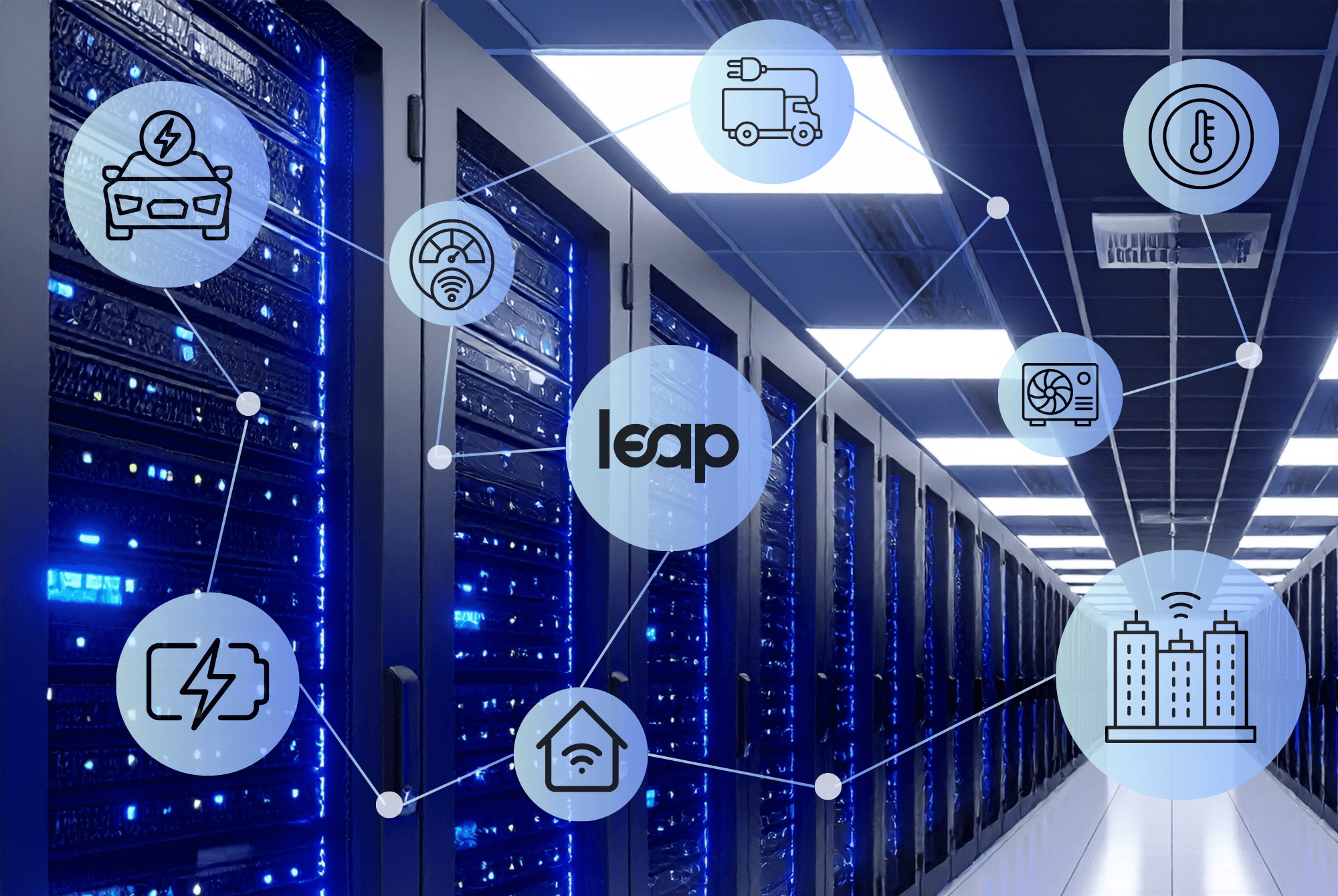December 19, 2022

Q: As you think back on key moments for Leap and our partner community this year, what stands out?
A: First and foremost, Leap and our partners showed up to support the grid when it mattered most. The record-breaking heat wave in California in early September was a crucial test for our ability to rapidly respond to strain on the grid - and I’m incredibly proud of how Leap and our partner community performed. Together with 24 of our partners, we mobilized over 21,000 unique energy devices to dispatch each day during periods when demand outstripped supply. Demand-side energy reductions were instrumental to preventing power outages in California during this grid emergency. We can confidently say that if it wasn’t for Leap, the likelihood of a blackout would have been higher.
But, it’s also important to remember that Leap isn’t built for just that one heat wave. We of course reliably show up during grid emergencies, but we also support the grid throughout the entire year, providing clean, flexible capacity every day so we can consistently balance the grid without relying on fossil fuels all the time.
I’m also proud of the entire Leap team for the amazing job they did this year continuing to improve our technology, grow the number of end customers enrolled on our platform and provide exceptional support to our partners. And, despite being a completely distributed company - we now have staff living everywhere from San Francisco to Croatia - we’ve maintained a cohesive company culture across multiple time zones.
Q: How has the Leap platform evolved this year and improved the partner experience?
A: Leap’s software platform is the foundation of our company, and we’re always focused on advancing our technology and becoming more efficient so we can better serve our partners. In 2022, we made important improvements to our partner portal, including upgrading our dispatch algorithm and implementing a more seamless end-to-end chain of customer onboarding all the way to settlements. It’s been important to work closely with our partners throughout this process to tailor improvements to their needs and identify the key factors that impact performance and can drive scale and performance across multiple markets.
Enhancing our developer experience has also been a (somewhat more under-the-radar) game changer for Leap. Creating easy access to energy markets is the core tenet of our business, and that can’t be done without providing a simple, smooth process to integrate with our platform. We’ve gotten a lot of positive feedback this year on the quality of our developer experience from happy software teams at our partner companies!
Q: What were Leap’s biggest challenges in 2022, and how are you thinking about these challenges going into 2023?
A: Leap’s biggest obstacles have typically involved existing energy market structures and regulations, and that will continue to hold true in 2023. Antiquated energy regulations are my biggest pet peeve! Sometimes, the regulatory landscape seems to be moving backwards, trying to apply old-fashioned rules to new technologies. For example, in many grid services programs, the number of hours devices are required to curtail in order to participate is very high (i.e., five hours or even more). This prevents many smaller resources from making meaningful contributions to the grid through aggregations.
In 2023, Leap will continue to advocate for regulatory reforms and the evolution of market structures to unlock the full potential of DERs. Top of my policy wishlist for 2023: An accelerated implementation of FERC 2222.
Q: What are your biggest priorities for Leap’s development going into 2023?
A: In 2023, we’re doubling down on our investments in developing our platform. Automating different parts of our solution has been key to helping our partners optimize and expand their energy market participation. Next year, we will move further towards end-to-end automation, including end-customer onboarding, market participation, settlements and payments. This means phasing out most manual processes and transitioning them to the platform - which will be essential as we scale.
Speaking of scale - next year we also want to get more of our partners integrated with our API, which is universal across all the markets and programs we work with and makes it easy to seamlessly scale across different geographies. That translates into more capacity on the grid and more value for our partners and their end customers. We are a tech company through and through, so we’re always looking to optimize and automate time-consuming processes.
Q: 2022 was a big year for renewable energy and climate policy. What does all that mean for the industry and the energy transition going into 2023?
A: It’s been incredible to watch the cost decline curves for solar, wind, and battery storage. Renewable technologies are coming online faster than ever. The passage of the Inflation Reduction Act (IRA) this past summer has already been a major boon to the industry, and many provisions haven’t even gone into effect yet. The IRA adds fuel to the fire, making it possible to build clean technology projects earlier - and larger. After the IRA fully kicks in starting in January, we’ll start to see the hardware on the ground - that means more renewable energy on the grid and more smart energy technologies in homes and businesses, including heat pumps, electric vehicles (EVs), battery storage systems and more.
And, the climate tech sector isn’t slowing down anytime soon. I’ve been seeing a huge push for talent to enter the climate tech space. I am so happy to see that - we need everyone to work on this really existential problem of climate change.
With all of these trends, I have a lot of optimism for climate tech and the distributed energy landscape going into next year. 2023 could be a game-changing year for Leap, our technology partners and the energy transition!


